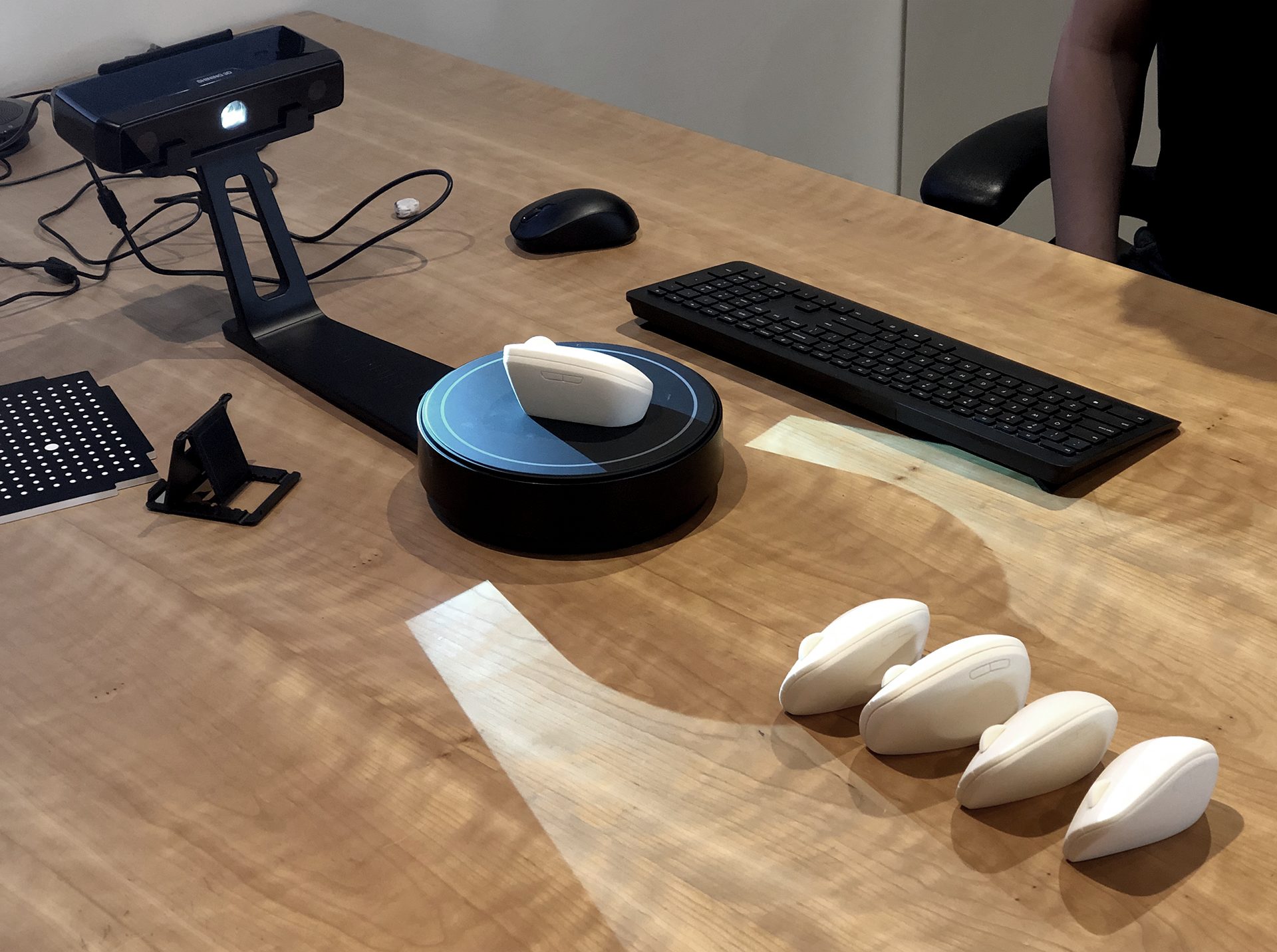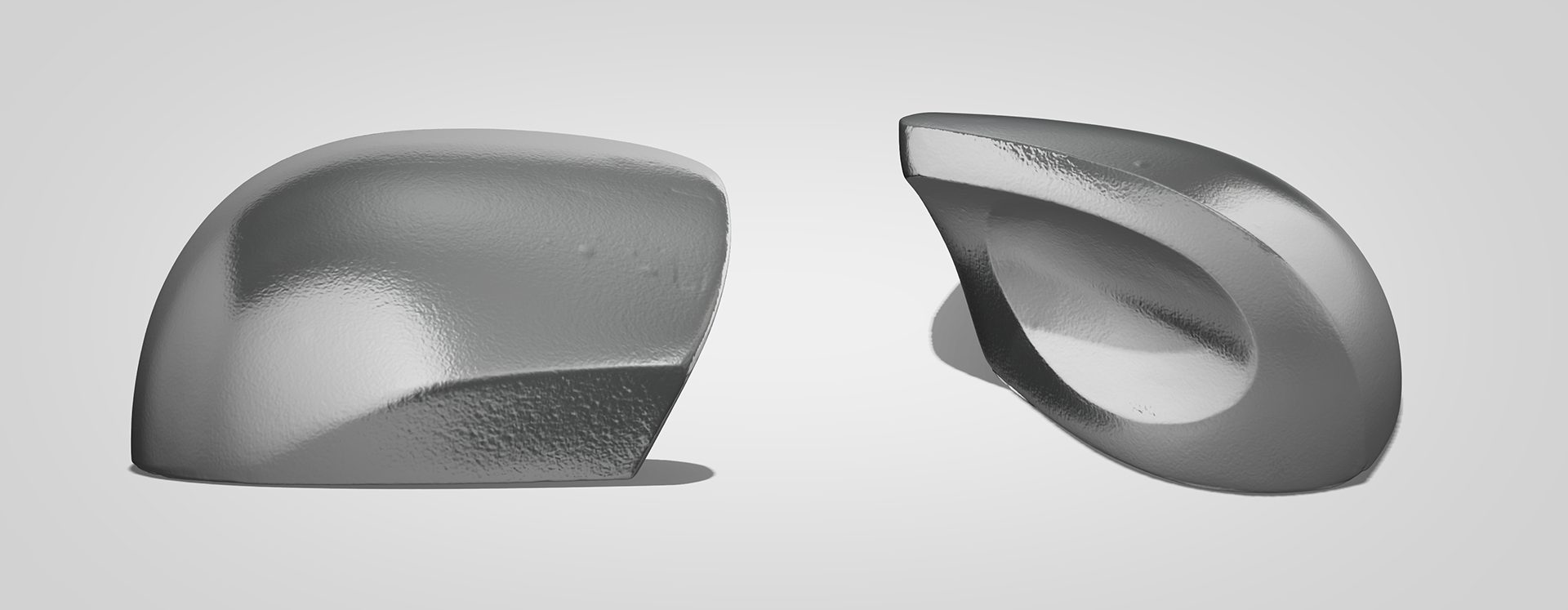
Lenovo Go Ergonomic Mouse and Keyboard – 2019
Workspace ergonomics are an important element of health and productivity. In collaboration with the Lenovo Design Team, we expanded their offering of desktop accessories to include a modern ergonomic keyboard and mouse set. Using rapid prototyping and usability studies, we evaluated dozens of forms and concepts. The result is a tented split-layout wireless keyboard with detachable numpad and vertically oriented wireless mouse that each embody professional tools with studied ergonomic benefits.
The Go Ergonomic Mouse and Keyboard received a 2022 Red Dot Design Award in the Product Design category.


Mouse Design
Development began with concept sketching and a broad range of forms in clay. Using ergonomics data as a basis, we explored shapes that were minimal enough to be universally appealing and not “over-fit” to one particular hand size or method of grip. With several promising clay models in hand, we refined and iterated in foam, where nuances of surfacing and part breakup were easier to express.


Confidence in a refined selection of foam models brought our process into CAD. We 3D scanned our hand-sculpted foam models, resulting in data suitable to guide design on the computer. The scan data, while not directly useable for manufacturing, acts as an underlay overtop of which we could rebuild and refine the shapes to the level of perfection needed.

Having refined the design within CAD, we produced several 3D prints to validate our work. Final tweaks of the printed models then informed updates to the CAD. This iterative cycle of physical models and design work was a critical feedback process for a product so fundamentally hands-on. We also developed early manufacturing strategies and part-breakup strategies, and defined button layout and proportions. The final design orients the hand in an ergonomically-beneficial neutral position, invites the user’s touch with recycled injection-molded cork, and pleases the eye with class A surfacing that blends soft form into a crisp expression.


Keyboard Design
Development of the keyboard occurred in parallel with the mouse. Sharing a product target date wasn’t the only similarity between the two. Being also a very physical object with sensitive ergonomic requirements, we began the keyboard with physical mockups as well. However, unlike the mouse, which involved several phases of hand-made models, the keyboard moved more quickly into CAD. After creating rough block models that appropriately balanced utilization of space and ergonomic factors, we started developing layouts on the computer.

For a keyboard, the keys themselves are integral to the overall form design; within the sub-category of ergonomic keyboards, this is even more true. We explored graphically the implications of several approaches to key shape and layout, in search of a solution both ergonomically beneficial and distinctly Lenovo. We then extrapolated a select number of concepts into 3D to explore the implications of key placement and aesthetic effect. The results of this refinement we machined from modelling foam to evaluate the feel in hand and submit for ergonomics and user testing.

Inherent with ergonomic keyboards is increased use of precious desk space. Orienting and shaping keys in any other fashion than the most efficient and linear packing of a standard layout brings that fact to bear. Having to reach far for a mouse, however, is an unacceptable ergonomic detractor. The industry solution often removes the numpad, but our user data suggested that professionals highly value a dedicated numpad for data entry. We developed a wireless numpad that stows beneath the tented center portion of the keyboard. Our solution reduces the footprint of the keyboard on the desk and allows for custom placement of the numpad to whichever position the user desires.

The final keyboard design is low-profile while also promoting healthy work. Subtle angles and tilting along multiple axis shift what is normally a rigid and rectilinear layout of keys to positions which compliment the organic nature of the human hand. Critically, the design achieves this in a smart and understated form – key to the Lenovo language.


As objects with heavy daily use, a mouse and keyboard must above all be comfortable. Considered materials selection is key to rewarding this constant interaction. The Lenovo ergonomic mouse and keyboard utilize injection-molded cork with recycled content that has a uniquely warm and relatable touch. Visual models of both designs were produced in accurate materials to express both the aesthetic and tactile pleasures of the designs.
